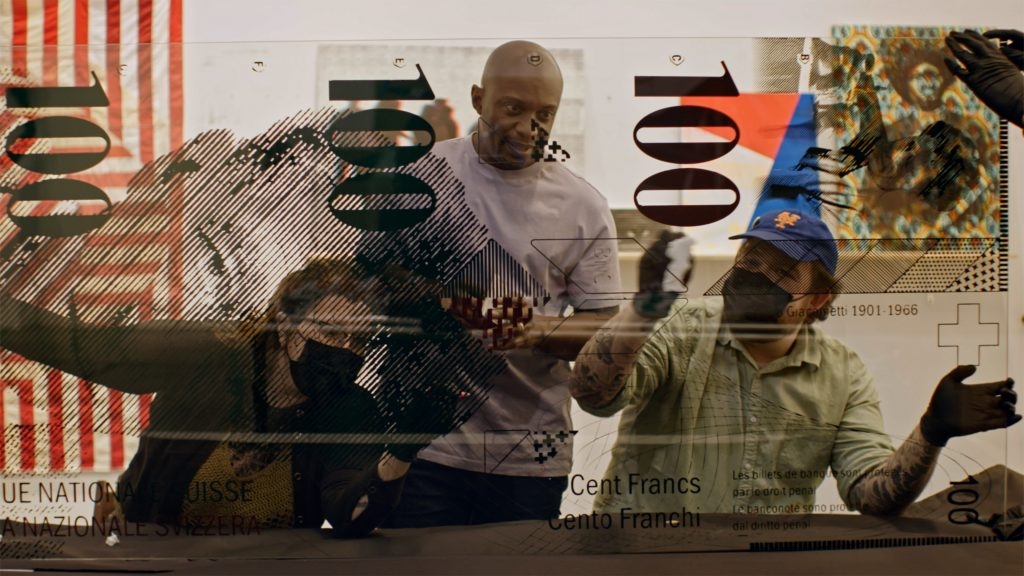As a child, artist Hank Willis Thomas was told he stared too much and asked too many questions. Today, these very attributes shape his artistic practice, which pivots on the theme of perspective. “All of my work is about framing and contexts,” says the artist. “Depending on where you’re standing, it really shapes your perspective of the truth, of reality, and of what’s important.” Reading Roland Barthes’ Camera Lucida, Thomas was struck by the idea of the punctum, the part of an image that impacts and stays with the viewer. Drawing from his background in photography to augment his work with other media, the artist’s sculptural works like Liberty (2015) isolate this punctum and translate it into three-dimensional space.
In his research, Thomas encountered the 1967 photobook by Ernest Cole documenting South African Apartheid. In particular, the artist was struck by an image of 13 coal miners being stripped nude for a medical examination. Rather than reproduce their exploitation and objectification, Thomas denies the viewer their naked bodies in his sculpture Raise Up (2014), instead isolating the miners’ heads and raised arms, confronting viewers with their gaze. Shortly after Thomas created Raise Up, the phrase “Hands up, Don’t shoot” became a popular protest chant in the wake of the police murder of Michael Brown in Ferguson, MI. As he mines history through photography, Thomas draws connections between past and present to illustrate the continuing logics of oppression that shape Black life.
At Walla Walla Foundry in Washington, molten brass is poured into specially designed casts to create the 500 individual pieces that will be welded together to form The Embrace (2023), a public memorial to Rev. Dr. Martin Luther King Jr. and Coretta Scott King to be installed in the Boston Common. The sculpture depicts two sets of arms intertwined in a loving embrace, referencing a photograph of the Kings embracing after Martin won the Nobel Prize in 1964. Envisioning his work as being as much about each of us as it is about the Kings, Thomas creates space for the public to engage with the sculpture physically and ensures it is accessible to as many people as possible. “I’d like to believe this is just the beginning of a new way of thinking about how public space can be viewed, and how we reflect on the past with care and concern for the future,” says Thomas.
-
Hank Willis Thomas was born in 1976 in Plainfield, New Jersey, and currently lives and works in New York City. The artist received his BFA from New York University in 1998 and his MFA from California College of the Arts in 2004. Thomas’ work traces a line between the past and the present, using photography and sculpture to call viewers’ attention to how context shapes one’s understanding of the world around them. Appropriating recognizable photographs, gestures, and iconography while using a variety of strategies to move viewers with and around his works, the artist weaves together narratives that reframe the present by more fully examining our history.
